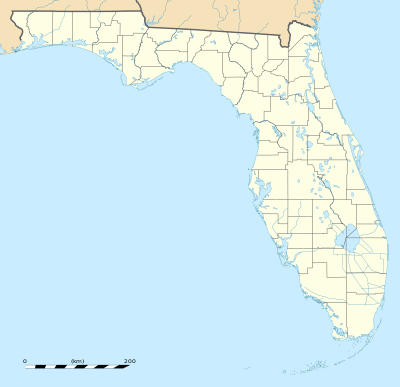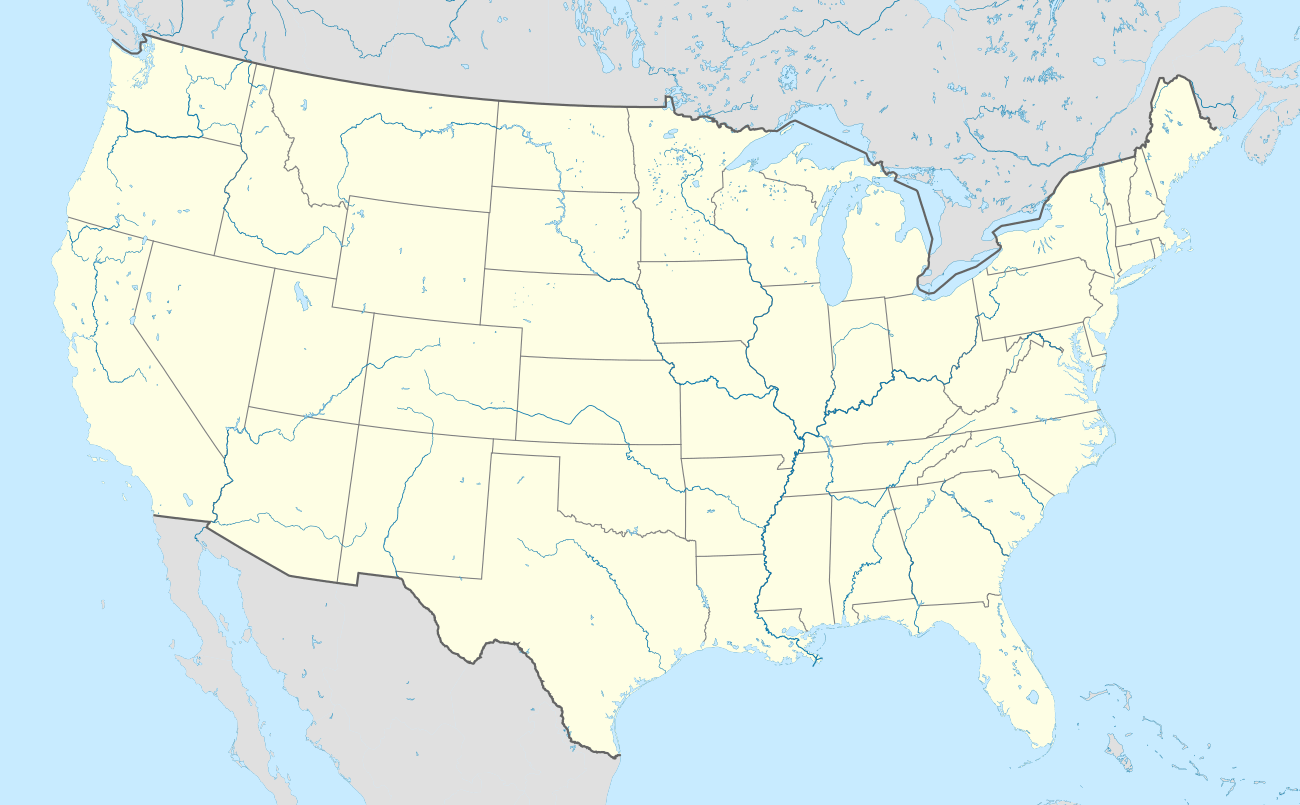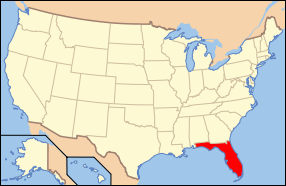Maple Leaf (shipwreck)
|
Maple Leaf (Passenger Steamer) (Wreck) | |
 Museum display of shipwreck artifacts | |
  | |
| Location | St. Johns River, Duval County, Florida, United States |
|---|---|
| Nearest city | Jacksonville, Florida |
| Coordinates | 30°09′31.0″N 81°40′49.7″W / 30.158611°N 81.680472°WCoordinates: 30°09′31.0″N 81°40′49.7″W / 30.158611°N 81.680472°W |
| Area | less than one acre |
| NRHP reference # | 94001650[1] |
| Significant dates | |
| Added to NRHP | October 12, 1994 |
| Designated NHL | October 12, 1994[2] |
The Maple Leaf is a United States National Historic Landmark shipwreck in Jacksonville, Florida, United States. The 'Maple Leaf, a side paddlewheel steamship, was first launched as a freight and passenger vessel from the Marine Railway Yard in Kingston, Ontario in 1851.[3] The 181-foot (55.2-meter) sidewheel paddle steamer measured 24.7 feet (7.5 meters) at the beam.[3]
Sinking
Maple Leaf was a civilian merchant steamship, chartered as a transport by the Union Army during American Civil War, that struck a Confederate torpedo - what we would now call a mine - as she was crossing the St. Johns River near Jacksonville on April 1, 1864.[3] Four crew members lost their lives in the sinking.[3] This was the first mine casualty of the war.[4] The screw steamer USS Norwich was dispatched to assess the condition of the wreck on April 2, and Captain Henry W. Dale concluded his ship and cargo as a total loss.[5]
Wreck
Maple Leaf′s wreck is located in the St. Johns River, to the west of the adjacent Mandarin neighborhood, in southeastern Duval County. The wreck was deemed a threat to river navigation so the U.S. Army Corps of Engineers had all structural components above the ship's main deck removed to clear the channel in the 1880s.[3] The shipwreck was rediscovered by the St. Johns Archaeological Expeditions, Inc. in 1984.[3] Volunteers identified the wreck in 1992.[6] The shipwreck site has been given the Smithsonial trinomial 8DU8032.
Because of the wreck's remarkable state of preservation (down to the line cleared in the 1880s), it is one of the most significant Civil War-era shipwrecks yet discovered, and a good example of a mid-19th century Great Lakes steamer.[7] On October 12, 1994, it was designated a National Historic Landmark.[1]
See also
References
- 1 2 National Park Service (2010-07-09). "National Register Information System". National Register of Historic Places. National Park Service.
- ↑ MAPLE LEAF (Passenger Steamer) (Wreck) Archived 2009-01-14 at the Wayback Machine. at National Historic Landmarks Program Archived 2007-09-27 at the Wayback Machine.
- 1 2 3 4 5 6 FJ Cantelas, BA Rodgers (1997). "Tools, Techniques, and Zero Visibility Archaeology". In: EJ Maney, Jr and CH Ellis, Jr (Eds.) the Diving for Science...1997, Proceedings of the American Academy of Underwater Sciences, Seventeenth annual Scientific Diving Symposium, Northeastern University, Boston, MA. Retrieved 2009-05-26.
- ↑ Martin, Richard A. (1993). "The Great River War on the St. Johns.". The Maple Leaf: An Extraordinary American Civil War Shipwreck. Keith V. Holland, Lee B. Manley, and James W. Towart (eds.). Saint Johns Archaeological Expeditions, Jacksonville, Florida. pp. 23–30. ISBN 0-9632286-0-9.
- ↑ Barnette, Michael C. (2003). Shipwrecks of the Sunshine State: Florida's Submerged History. Association of Underwater Explorers. pp. 37–38. ISBN 0-9743036-0-7.
- ↑ Cantelas, Frank J. (1992). "Maple Leaf. Future Management and Past Field Investigations". Report prepared by the Program in Maritime History and Nautical Archaeology, East Carolina University, Greenville, North Carolina. Submitted to St. Johns Archaeological Expeditions, Inc.
- ↑ "NHL nomination for Maple Leaf (shipwreck) (redacted)" (PDF). National Park Service. Retrieved 2018-01-17.
External links
![]()
- Maple Leaf (Shipwreck Site) at Florida's Shipwrecks: 300 Years of Maritime History - A National Register of Historic Places Travel Itinerary
- Florida's Office of Cultural and Historical Programs
- Maple Leaf Shipwreck

